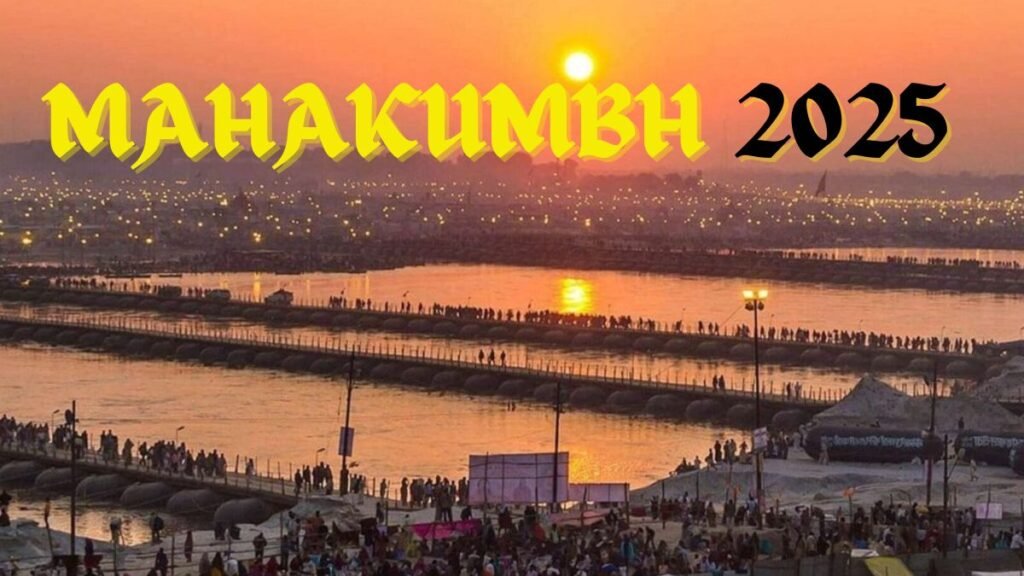Mahakumbh, one of the largest religious gatherings in the world, is held every 12 years in Prayagraj, drawing millions of devotees, tourists, and businesses to the holy city. This grand event, deeply rooted in Hindu tradition, is not just a spiritual festival but also a massive economic driver. From small-scale vendors to large corporations, Mahakumbh significantly boosts local businesses and tourism, leaving a lasting impact on Prayagraj’s economy.
Economic Boom During Mahakumbh
Mahakumbh serves as a financial catalyst, transforming Prayagraj into a thriving hub of economic activity. With millions of pilgrims visiting the city, the demand for goods and services skyrockets, directly benefiting local businesses. The influx of visitors fuels various industries, from hospitality and retail to transportation and food services. Government spending on infrastructure and tourism promotion further amplifies this economic impact.
1. Tourism Industry: A Massive Influx of Visitors
The tourism industry experiences an unprecedented surge during Mahakumbh. Hotels, guesthouses, and homestays witness full occupancy, with many accommodations being booked months in advance. The temporary tent cities set up to accommodate the overwhelming number of pilgrims also provide employment to thousands of laborers, catering staff, and service providers.
Additionally, restaurants and street food vendors enjoy peak business, serving traditional Indian delicacies to visitors from across the country and the world. Many tourists extend their stay to explore Prayagraj’s historical and cultural sites, further boosting tourism revenue.
2. Hospitality and Accommodation Sector
Mahakumbh necessitates the development of large-scale accommodations to house the millions of visitors. Apart from hotels and lodges, government and private agencies set up temporary camps, dharamshalas, and shelters. The surge in demand provides employment to thousands, including hotel staff, cleaners, security personnel, and guides. International visitors often seek high-end lodging, providing an opportunity for premium hotels to benefit from luxury tourism.
3. Local Businesses and Vendors Thrive
Small and medium-sized enterprises (SMEs) see an economic windfall during Mahakumbh. Local artisans, handicraft sellers, and souvenir shops experience record sales as visitors purchase religious items, textiles, and traditional artwork. Vendors selling puja materials, idols, garlands, and devotional books witness an exponential rise in earnings. Additionally, street markets and temporary stalls thrive as they cater to the daily needs of pilgrims.
4. Transportation and Connectivity
The transportation sector benefits immensely from Mahakumbh. Railways, airlines, and road transport services increase their frequency to accommodate the surge in travelers. Auto-rickshaws, taxis, and cycle rickshaws experience heightened demand, significantly boosting the incomes of local drivers. The Indian government also invests heavily in infrastructure, constructing new roads, expanding railway stations, and improving connectivity, which continues to benefit the city long after the event concludes.
5. Employment Opportunities
With millions of visitors, the demand for temporary workers in various sectors rises sharply. From sanitation workers and security personnel to tour guides and hospitality staff, Mahakumbh creates thousands of short-term jobs. Additionally, skilled professionals such as photographers, event managers, and healthcare providers also find ample opportunities to earn during this period.
6. Government Investment in Infrastructure
Mahakumbh prompts large-scale infrastructural development, with the government allocating substantial funds to improve roads, bridges, sanitation facilities, and public transport. These investments not only support the event but also leave a lasting impact, enhancing the city’s infrastructure and benefiting residents for years to come. New flyovers, sewage treatment plants, and upgraded communication networks contribute to the long-term urban development of Prayagraj.
7. Increased Revenue for Local Administration
The government and local administration collect substantial revenue from Mahakumbh through various means, including tourism taxes, special permits, and event-related commercial activities. The increased financial inflow helps in the better maintenance of public services and contributes to future urban development projects.
8. Boost to Digital and Cashless Economy
With digital transactions becoming more prevalent, Mahakumbh accelerates the adoption of digital payment methods. Many businesses, from street vendors to large hotels, accept online payments, enhancing financial inclusion and modernizing the local economy. The increased use of digital platforms for ticket bookings, accommodation, and shopping brings Prayagraj’s economy in line with global trends.
Challenges and Areas for Improvement
While Mahakumbh significantly boosts the local economy, it also presents challenges such as overcrowding, environmental concerns, and waste management. The surge in visitors can strain city resources, requiring efficient planning and management. Sustainable practices, such as eco-friendly accommodations, waste recycling, and improved sanitation measures, can further enhance the economic benefits of the event while minimizing negative impacts.
Conclusion
Mahakumbh is not just a spiritual phenomenon but an economic powerhouse that fuels Prayagraj’s local businesses, tourism, and infrastructure development. The event generates massive revenue, creates employment, and boosts various industries, leaving a lasting impact on the city’s economy. With continued investment in infrastructure, technology, and sustainable practices, Prayagraj can maximize the long-term benefits of Mahakumbh, ensuring prosperity for years to come.
